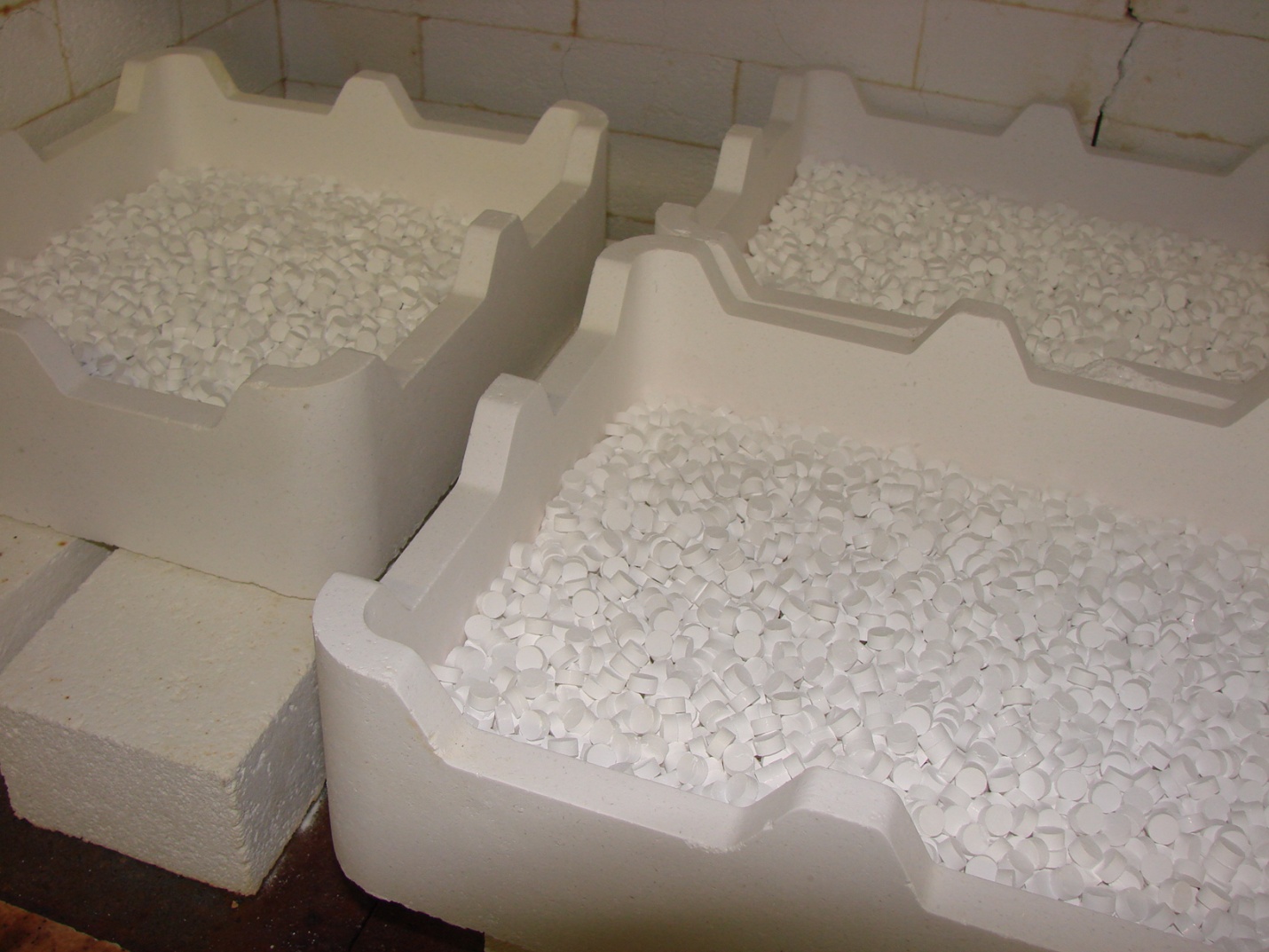
(The above figure shows one layer of a batch of tantalum pentoxide tablets in a high temperature furnace)
Tantalum Pentoxide is widely used in optical coatings. It has a useful transmission range from the near UV (350nm), extending out to the IR (approximately 8 microns, 8000nm).
Tantalum Pentoxide is a high refractive index material. It forms durable, hard, scratch resistant coatings which, in addition, have a high threshold resistance to laser radiation damage. Tantalum Pentoxide thin-films are most frequently paired with a low index material such as Silicon Dioxide in thick, low stress, multi-stack coatings. Tantalum Pentoxide is particularly well-known for its applications in the telecommunications industry, where it is well suited to operate with Nd-doped YAG lasers. Its low absorption in the near IR region is particularly important.
In addition, Tantalum Pentoxide, finds applications in the electronics industry as a thin–film gate dielectric, where its low leakage current is a well-known advantageous feature.
Tantalum Pentoxide is typically manufactured as 8-10mm D x 5mm H fully oxidized white tablets. These tablets are the most popular for industrial coating applications. As with many oxides, the material requires some pre-conditioning to stabilize the dynamic Ta:O ratio during e-beam evaporation. This simply entails slowly sweeping the e-beam over the tablets to obtain a uniform surface melt. As the system is powered up to obtain a full melt, pressure or an RGA monitor is used to determine when a stable melt is obtained. At this point, coating can commence.
| Typical Evaporation Conditions: | E-Beam |
|---|---|
| Temperature: | approx. 2000oC |
| Rate: | 2-5 angstroms/second |
| Partial Pressure of Oxygen Gas: | 1x10-4torr , to maintain stoichiometry of the coating. |
| Substrate Temperature: | 150oC - 300oC |
|
The evaporation source is frequently held in a graphite or tantalum liner. |
|
| Standard Properties | |
| Formula: | Ta2O5 ……..Tantalum oxide, tantalum pentoxide, tantalum (V) oxide. |
|---|---|
| Formula weight: | 441.89 (one mol) |
| Color: | White |
| Melting Temperature: | 1872oC |
| Crystal Density: | 8.2 - 8.3 g/cm3 |
If the appropriate oxygen partial pressure is maintained during evaporation, good stoichiometry thin-films are obtained with low absorption over it full transmission range. As with most thin films, some post deposition baking ( approx. 400oC ) can improve absorption characteristics although, IBAD techniques usually obviate this requirement. As with all oxide, the refractive index is critically dependent upon film stoichiometry in this case, the Ta: O ratio. Typically, n = 2.30 to 1.98. It should be noted tha IBAD will, usually yield a slightly higher n = 2.08, but precise values will depend upon the evaporation conditions.